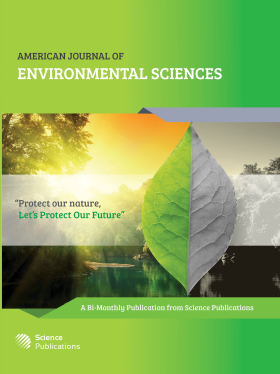Heterogeneous Modeling, Identification and Simulation of Activated Sludge Processes
Abstract
Problem statement: The activated sludge system is a complex dynamic process and must account for a large number of reactions between large numbers of components. There is necessity for simulation models which describe the dynamic behavior of the activated sludge process. The application of the models in most treatment plants is limited due to lack of appropriate data acquisition and parameters identification studies. To realize this, an improvement of the operating strategies of Waste-Water Treatment Plants (WWTP) is required. The objectives of this study were to: (i) To build a process model considering mass transfer limitations and simulate an existing plant (Helwan WWTP) and validate the results using data from another existing plant with (Zenine WWTP). (ii) To adjust the model kinetic parameters of the biochemical reactions under the effect of mass transfer conditions to be prepared for simulation purposes. (iii) Study the effect of the operating conditions on the removal efficiency of both substrate and ammonia. Approach: A process model of the process was built considering mass transfer limitations and the three growth processes: Carbon oxidation, nitrification and denitrification. Helwan WWTP was used in order to extract the suitable stoichiometric and kinetic parameters to be used for the simulation. Helwan WWTP was used through the simulation results of the substrate (BOD) and ammonia. Egyptian Zenine WWTP was used for the testing and validation of the process model through predicting the response of substrate. Results: The average error of the removal efficiency in Helwan WWTP reached 3.3% for the substrate and 12.5% for the ammonia while the average error of the removal efficiency in Zenine WWTP of substrate reached 4.6%. The effects of recycle ratio, flow rate and influent substrate concentrations on the removal efficiency of the aeration tank were studied. It was found that the removal efficiency of substrate and ammonia was increased by increasing the recycle ratio, influent substrate concentrations and also increased by decreasing influent flow rates. It was found also that the sludge age increased by increasing the recycle ratio and decreased by decreasing the influent flow rates. Conclusion: The heterogeneous process model was able to describe the characteristics and reflects the real phenomena existing in activated sludge processes.
DOI: https://doi.org/10.3844/ajessp.2009.352.363

- 5,198 Views
- 5,214 Downloads
- 2 Citations
Download
Keywords
- Activated sludge
- mass transfer
- carbon oxidation
- nitrification
- gentrification
- removal
- efficiency
- recycle ratio
- flow rate
- aeration tank
- sludge age
